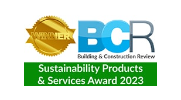A major cause of global warming, carbon emissions are the release of carbon dioxide and other carbon-containing gases into the atmosphere. Because these gases absorb infrared radiation emitted from the Earth’s surface global temperatures rise leading to extreme weather events, rising sea levels, and changes in plant and animal life. This has been steadily increasing since the Industrial Revolution when there was a marked increase in the burning of fossil fuels, a process which releases carbon dioxide.
Today the main sources of carbon emissions are:
• Energy production – where burning of coal and gas is used to generate electricity and heat. This remains the largest single source of carbon emissions.
• Transportation – Cars, lorries, aeroplanes, and ships using diesel or petrol derivatives as fuel release carbon dioxide and other greenhouse gases
• Manufacturing, agriculture, and other industrial activities – release carbon dioxide and other greenhouse gases as a by-product of their operations
• Deforestation and other changes in land use – agriculture and development, can release carbon dioxide that has been stored in the soil and vegetation
So What Can Be Done to Reduce Carbon Emissions?
There is no single silver bullet to address the reduction of carbon emissions, although attempts to tackle the main sources of carbon generation as outlined are much more likely to deliver a notable and faster impact. Carbon generation is however so prevalent that multiple approaches need to be adopted in conjunction to halt or at least slow the damaging impacts predicted and that we are already experiencing around the planet.
Switching to renewable energy sources such as solar and wind-generated power is given, alongside greater improvements in energy efficiency of businesses, and appliances deployed.
Social change is also required, with greater dependence on more energy-efficient public transportation or actively opting to drive less and walk more. Addressing diet has been proposed since meat production is a major source of greenhouse gases. Recycling is also critical in reducing waste that goes to landfills, which in turn reduces the amount of methane gas that is released into the atmosphere. Better management and planting of trees that absorb carbon dioxide has also been long recognised as a proactive and environmentally friendly option. The problem is that this has been used to deflect a lack of active effort to reduce carbon by organisations through the action of offsetting.
Carbon offsetting
Carbon offsetting is a voluntary market-based mechanism that enables organisations to compensate for their greenhouse gas emissions by supporting projects that reduce or remove greenhouse gases from the atmosphere. The goal of these projects, which can be located anywhere in the world, is to match in reduction of what a company is producing in terms of greenhouse gases in the atmosphere. The problem is the organisation is failing to address the root causes of its own carbon emission activity. Also offsetting in projects geographically distanced from an organisation’s own carbon generation is likely to have a more limited impact.
Carbon offsetting is not a substitute for reducing emissions, and can quickly become a means to counteract poor efforts to amend organisational activities that actively generate carbon emissions, such as legacy industrial functions and unnecessary business travel. As a result, carbon offsetting becomes regarded as little more than corporate social responsibility activity which many governments have now rightly called out as little better than whitewashing.
Whilst larger, listed organisations will be held accountable in the UK and precluded from citing offsetting over actual investment in sustainability, the processes used to offset carbon emissions remain valid and can be used as a guide for delivering real change in business practice.
Planting trees, investing in renewable energy projects, improving energy efficiency in businesses, supporting sustainable agriculture practices, such as crop rotation and cover cropping, and methane capture and storage all have a role to play in helping to mitigate the effects of climate change are all valid, sustainable activities if employed as part of a wider decarbonisation strategy. But that strategy must seek to actively reduce an organisation’s emissions to the point where net zero is attainable across the entire corporate structure, from industrial processes to buildings and transportation.
Active reduction of carbon generation is the ultimate goal, but the issue of existing high levels of greenhouse gasses in the atmosphere means that there is also a great deal of interest in technologies and processes that can actively capture and remove carbon dioxide from the atmosphere.
In part 2 we consider a future based on carbon capture…













